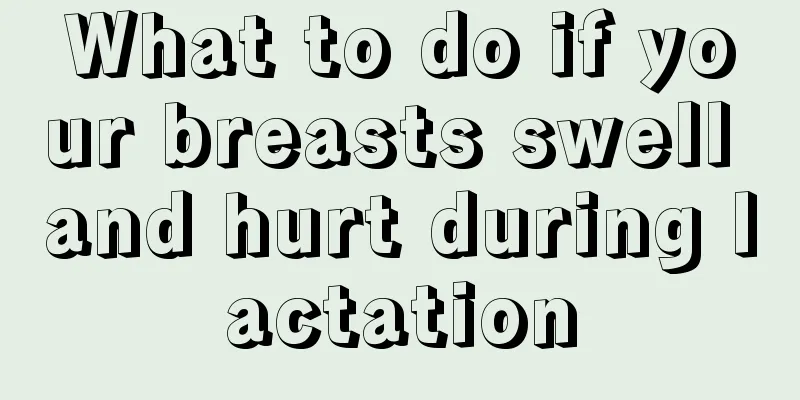Female chest acne

|
Some female friends will feel that they have acne on their chest, which is very strange and they don’t know how to take care of it. In fact, after discovering the acne, you should first change your lifestyle. Don’t stay up late, as this will accumulate more toxins in your skin. You should also clean your skin regularly, which is also very important to avoid the growth of acne. 1. Daily care Wash your face with warm water once or twice a day to clean your skin, and avoid squeezing or scratching skin lesions with your hands. Avoid using oily and powdery cosmetics and ointments and creams containing glucocorticoids. 2. Common methods of acne treatment (1) Topical medications: Retinoic acid (retinoic acid cream, adapalene gel, tazarotene gel), benzoyl peroxide, antibiotics (clindamycin, erythromycin, chloramphenicol, etc.), azelaic acid, sulfur lotion, etc. (2) The first choice of oral antibiotics is tetracycline (minocycline, doxycycline, etc.), followed by macrolides (erythromycin). Avoid antibiotics commonly used to treat systemic infections such as levofloxacin. The course of antibiotics is usually 6 to 12 weeks. (3) Oral isotretinoin For severe acne, oral isotretinoin is the standard treatment and currently the most effective method for treating acne. The treatment course aims to achieve a minimum cumulative dose of 60 mg/kg. (4) Anti-androgen therapy, such as the oral contraceptive cyproterone acetate combined tablets, is suitable for female patients with moderate to severe acne accompanied by symptoms of excessive androgen levels (such as hirsutism, seborrhea, etc.) or polycystic ovary syndrome. Female patients with delayed-onset acne and acne that is significantly aggravated before menstruation may also consider using oral contraceptives. (5) Oral glucocorticoids are mainly used for fulminant or aggregated acne, following the principle of short-term, low-dose, and combined with other methods. (6) For patients who cannot tolerate or are unwilling to receive drug treatment, physical therapy such as photodynamic therapy (PDT), fruit acid therapy, laser therapy, etc. can also be considered. 3. Grading of treatment for acne (1) Level 1 is generally treated topically, with topical retinoic acid preparations being the first choice. (2) Level 2: Combined use of topical retinoids and benzoyl peroxide or antibiotics, and oral antibiotics if necessary. (3) Grade 3 often requires combined treatment, with oral antibiotics combined with topical benzoyl peroxide and/or retinoic acid drugs as the first choice. Antiandrogen therapy may also be considered for female patients where indicated. |
<<: Does donkey hide gelatin help pregnancy?
>>: Depression in the middle of the chest
Recommend
Taking birth control pills during menstruation
In daily life, many women take oral contraceptive...
Why do women's nipples hurt?
Due to the characteristics of women's physiol...
What causes vaginal itching? Causes of vaginal itching
When women experience vaginal itching, they shoul...
You can’t lose weight by starving yourself. Please keep this diet guide for the exercise phase
Spring has come, and summer is not far away. Peop...
The dangers of using metronidazole during breastfeeding
Ornidazole is mainly effective for treating most ...
What to eat during pregnancy to promote ovulation effect
Only when a woman ovulates normally can the egg a...
What are the benefits of drinking chicken soup for pregnant women? How should pregnant women drink chicken soup?
Chicken soup is a good tonic. Pregnant women drin...
There is a small fleshy bud growing from the vagina
Nowadays, many young women lack safety awareness ...
How long does it take from the start of ovulation to the end of ovulation?
Human life is very strange. When a woman starts f...
Unveiling the Secrets of Vasculitis: The Mysterious "Vascular Disease"
Vasculitis, a seemingly common medical term, hide...
What should I do if my vaginal discharge is brown and bloody? Here are some tips to deal with it
When you find that the color of your vaginal disc...
If I have onychomycosis, do I need to remove the nail to treat it?
Not really Onychomycosis is the common name for o...
Does mydriasis hurt your eyes? Do you really understand?
"Dilate the pupil once, and use the eyes for...
Does long-term wearing of orthokeratology lenses have any effect on the cornea?
There are more and more children with myopia, and...
Young people please eat less sweets! A study of 30,000 people found that drinking one cup of sugary drink a day increases the risk of colon polyps by 34%!
The incidence of colorectal cancer among young pe...









